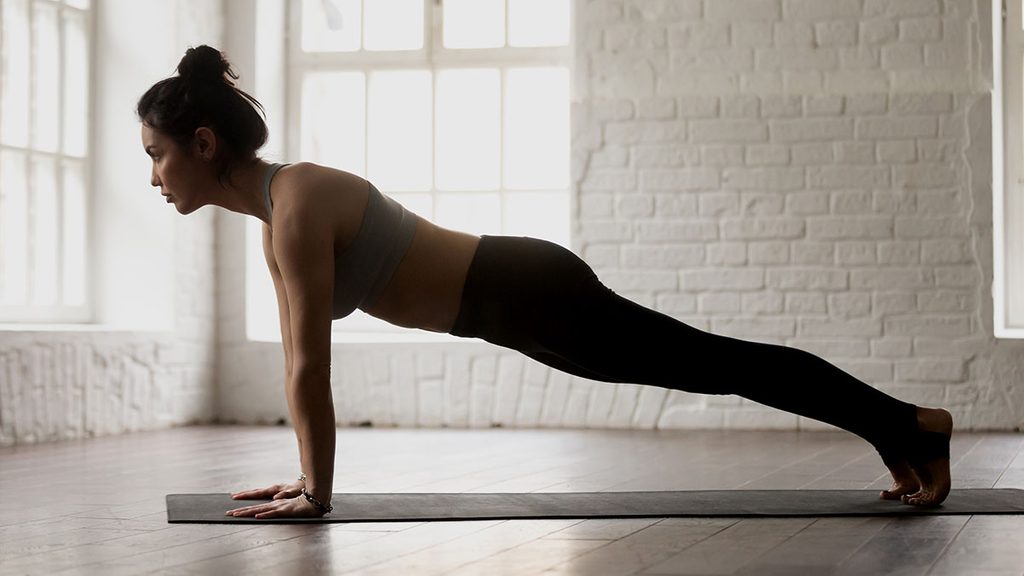5 Ways to Get the Most out of a Plank

First, make sure you're planking properly. Then get the most out of this full-body exercise with these easy modifications.
Daily planks are a quick and easy way to stay fit at home. Though you mostly feel the burn in your abs, planks are an excellent full-body workout—they strengthen your shoulder, back and chest muscles, as well as the front of your thighs, according to Charlotte Shen, the owner of Max Fitness in Toronto and a registered kinesiologist. Here are five things to keep in mind when you’re planking to get the most out of the pose.
(Related: Here’s how long you need to hold a plank for.)
Hold the plank for as long as possible
“You should always push to exhaustion,” says Shen. “Meaning, you should plank until you cannot plank any more. Like, you can’t hold it for one more second.” And forget about the clock, she suggests. That’s the way to actually improve your core endurance. You’ll find that the more you practice, the longer you’ll be able to hold the pose.
Maintain good posture
The key to good plank posture is to keep your legs straight, back parallel to the ground and spine neutral, says Rebecca Graham, the owner of No Borders Fitness in Midland, Ontario, and a master trainer at Pound fitness. “Imagine that you’re trying to shorten the distance between your elbows and your toes by squeezing inwards in both directions, using all positional forces to keep the back flat.” And most importantly, squeeze your butt. “You can’t squeeze your butt enough,” says Graham. This creates tension, which helps your legs stay straight and works your core.
(Related: These chest stretches can help improve your posture.)
Move while you’re planking
To increase the intensity of the plank, Graham says to add propulsion. Plank jacks (moving your feet in a jumping jack position while you hold the plank), mountain climbers (lifting alternating knees to your chest, as if climbing) or alternating between holding the plank position on your hands and dropping down to your elbows will all work your whole body more than a static plank.
Reverse your plank
Once you’ve mastered the standard plank, reverse it and try a back plank. Start on your back and lift yourself up with your fingers facing your feet. Don’t forget to drop your shoulders and keep your body straight. “[This exercise] works your muscles on the posterior side, like your mid-back, glutes and hamstrings,” Shen says. Introducing new exercises or variations, like a back plank, to your routine is key to maintaining full-body strength.
Make your plank bigger
Anytime you want to add intensity, make the plank bigger. This could mean getting off your knees and onto your toes, coming up from your forearms onto your hands or opening up into a side plank. “By adding side planks, by adding levels, we ultimately add intensity,” says Graham. Conversely, if you’re struggling, make your plank smaller. “By simply dropping the knee or going down to the elbow, you can shorten your range of motion,” says Graham. “These small little tweaks to plank positions can offer a huge amount of relief for someone who’s starting off. Finding something that works for you is absolutely key.”




